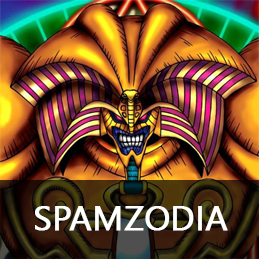Posted Sat Sep 20, 2014 3:26 pm
A Guide to Deck Thinning

This article will cover a concept that can be challenging for new players, but is nonetheless an important one to understand. Based on the title, you've probably already guessed it, but we're going to be learning about deck thinning!
As you probably know, the maximum number of any one specific card that can be run in a deck (given that the card is not on the banlist) is 3. This fact, along with the rule that the minimum card count for a deck is 40, combine to form a singular problem that every yugioh player has: how do I get the cards I need when I need them?
The answer? You can’t. At least not all the time. However, there are tactics you can utilize to maximize your statistical chance of getting the right cards. One of these strategies is called deck thinning.
Deck thinning is the art of reducing the number of cards left in your deck, thereby increasing the odds of drawing the cards you need.
A prime example of a card that accomplishes this is Upstart Goblin. The effect allows you to draw one card while giving your opponent 1000 lifepoints. By running 3 Upstart Goblins in a 40 card deck, you are effectively running a 37 card deck, since whenever you draw Upstart Goblin, you can activate it to get another card from your deck (thereby reducing the number of cards left in your deck by 1).
For those of you who still doubt the value of this technique, let me demonstrate its potential with math.
- Deck Thinning Math:
- Lets say you are playing a 40 card Blackwing deck, and want to open up with a Black Whirlwind (you run 3 of these). You will have 6 cards in your opening hand.
We can model this scenario using the Hypergeometric Distribution. In this mathematical equation, we define for Duel Monsters the following:
Population Size = Size of remaining deck
# of Successes in Population = # of desired card remaining in deck
Sample Size = # of cards drawn
Number of Successes in Sample = 1 (Look to P(X>1) for chances of drawing 2 or 3 copies)
So, the probability of drawing 1 or more Black Whirlwind using this calculation turns out to be:
39.43%
Adding 3x Upstart Goblin to your deck (Population Size = 37) increases your probability of obtaining at least 1 Black Whirlwind in your starting hand to:
42.15%
It is important to note that while deck thinning can be accomplished with specific cards, it can also be done by using cards not specifically designed for it. For example, by playing Reinforcement of the Army to grab Armageddon Knight, and using Armageddon Knight's ability to send Plaguespreader Zombie to the grave removes two cards from your deck and increase the odds of drawing other cards that you need later on.
One more thing: when deck thinning while using multiple deck thinning devices, order can matter.
For example, lets say you have 20 cards left in your deck, and need to draw Black Luster Soldier-Envoy of the Beginning or you will lose the duel next turn. In your hand are three cards, Reinforcement of the Army, Allure of Darkness, and Plaguespreader Zombie. If you activate Allure first, you have a 1/10, or 10%, chance of drawing the card, and therefore a 90% chance to lose at the moment.
But if you activate Reinforcement of the Army to grab Armageddon Knight, normal summon Armageddon Knight and use his effect to send Destiny Hero-Malicious to the grave, then use Malicious’ effect to summon a Malicious from the deck, all before activating Allure of Darkness, the odds are more in your favor. You got rid of 3 cards before you attempted to draw into your key card (1 Armageddon Knight and 2 Destiny Hero-Malicious). Therefore you have a 2/17, or 11.77%, chance of not instantly losing. Again, the difference may not seem large, but could very well be the difference between victory and defeat. This is even more true in tournament play, when you are looking to create the best long-term winning potential and every percent chance of increasing that winning potential counts!
Deck thinning is not something that will guarantee wins. It is not the end all be all that distinguishes between victory or defeat. Rather, it is a tool to help maximize your chance of winning, or of at least putting up a good fight. And when playing someone better than you, it can very well mean the difference between an expected outcome, or an ending that shocks the masses.
© Bobee42. All rights reserved.
 Rules
Rules FAQ
FAQ Banlist
Banlist





 Dorm Rank :
Dorm Rank :  Posts
Posts Coins :
Coins :  Duel Points :
Duel Points :  YGO Custom Points :
YGO Custom Points :  YGO Post Points
YGO Post Points YGO Rep Points
YGO Rep Points Dueling Event Wins :
Dueling Event Wins : 




